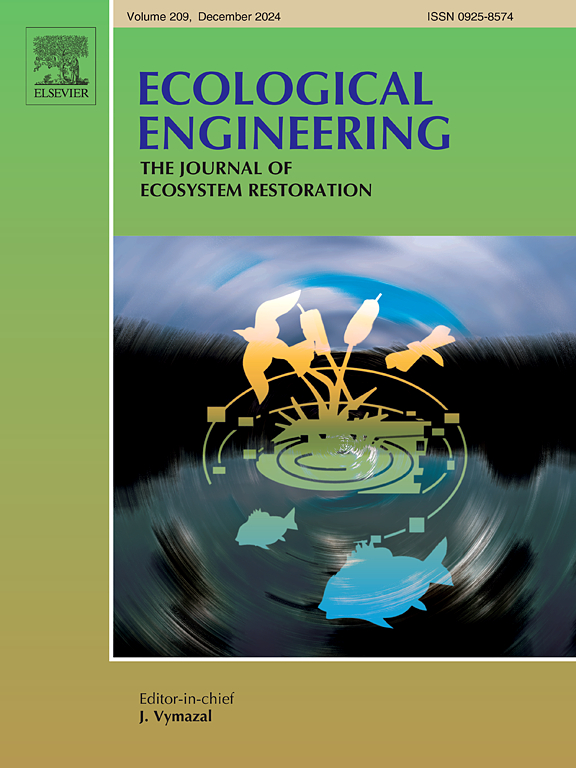中国三北防护林规划区土地利用碳排放变化格局及时空变迁
IF 3.9
2区 环境科学与生态学
Q1 ECOLOGY
引用次数: 0
摘要
土地利用碳排放已成为全球研究的热点,以往的研究主要集中在土地利用碳排放估算和影响因素分析上。然而,土地利用碳排放的空间格局和趋势往往被忽视,忽视这方面可能会阻碍有针对性的缓解措施和政策的制定。因此,本研究的重点是中国生态恢复计划区域——三北防护林计划(TNSFP)。采用碳排放系数法和探索性时空数据分析(ESTDA)相结合的方法,对中国TNSFP地区土地利用碳排放的空间格局和趋势进行了可视化分析。研究发现,1995 - 2020年,三峡库区土地利用碳排放总量从2.78 × 108 t增加到8.39 × 108 t,增长了3倍。土地利用碳排放表现出显著的正空间自相关,空间收敛表现出先减小后增大的趋势。土地利用碳排放时空格局表现出明显的路径依赖和空间锁定特征,并呈逐渐减弱的趋势。我们强调,城市化已成为TNSFP地区碳排放的主要驱动因素,旨在增强碳固存的传统生态保护和造林政策已被证明不足以遏制碳排放的增长。研究结果对中国生态恢复区土地利用碳排放的空间格局和趋势提供了新的认识,并提供了更深入的认识。为国内外生态恢复区的绿色、低碳、可持续发展,以及制定差别化的减碳政策提供了有价值的参考。本文章由计算机程序翻译,如有差异,请以英文原文为准。
The change pattern and spatiotemporal transition of land use carbon emissions in China's Three-North Shelterbelt Program Region
Land use carbon emissions have become a global research focus, with previous studies primarily concentrating on the estimation of carbon emissions from land use and the analysis of influencing factors. However, the spatial patterns and trends of land use carbon emissions are often overlooked, and neglecting this aspect may hinder the development of targeted mitigation measures and policies. Therefore, this study focuses on the ecological restoration Program region in China - the Three-North Shelter Forest Program (TNSFP). By combining the carbon emission coefficient method with Exploratory Spatial-Temporal Data Analysis (ESTDA), this research provides a visual analysis of the spatial patterns and trends of land use carbon emissions in the TNSFP region of China. We found that from 1995 to 2020, the total carbon emissions from land use in the TNSFP region increased from 2.78 × 108 tons to 8.39 × 108 tons, representing a threefold increase. Land use carbon emissions exhibited a significant positive spatial autocorrelation, with spatial convergence showing a trend of initially decreasing and then increasing. The spatiotemporal pattern of land use carbon emissions displayed clear path dependence and lock-in spatial characteristics, with a gradual weakening trend. We emphasize that urbanization has been the primary driver of carbon emissions in the TNSFP region, and traditional ecological conservation and afforestation policies aimed at enhancing carbon sequestration have proven insufficient in curbing the rise in carbon emissions. The findings offer new insights into the spatial patterns and trends of land use carbon emissions in China's ecological restoration regions, providing a deeper understanding. Additionally, they offer valuable references for the green, low-carbon, and sustainable development of ecological restoration regions in China and other countries, as well as for the formulation of differentiated carbon reduction policies.
求助全文
通过发布文献求助,成功后即可免费获取论文全文。
去求助
来源期刊

Ecological Engineering
环境科学-工程:环境
CiteScore
8.00
自引率
5.30%
发文量
293
审稿时长
57 days
期刊介绍:
Ecological engineering has been defined as the design of ecosystems for the mutual benefit of humans and nature. The journal is meant for ecologists who, because of their research interests or occupation, are involved in designing, monitoring, or restoring ecosystems, and can serve as a bridge between ecologists and engineers.
Specific topics covered in the journal include: habitat reconstruction; ecotechnology; synthetic ecology; bioengineering; restoration ecology; ecology conservation; ecosystem rehabilitation; stream and river restoration; reclamation ecology; non-renewable resource conservation. Descriptions of specific applications of ecological engineering are acceptable only when situated within context of adding novelty to current research and emphasizing ecosystem restoration. We do not accept purely descriptive reports on ecosystem structures (such as vegetation surveys), purely physical assessment of materials that can be used for ecological restoration, small-model studies carried out in the laboratory or greenhouse with artificial (waste)water or crop studies, or case studies on conventional wastewater treatment and eutrophication that do not offer an ecosystem restoration approach within the paper.
 求助内容:
求助内容: 应助结果提醒方式:
应助结果提醒方式:


